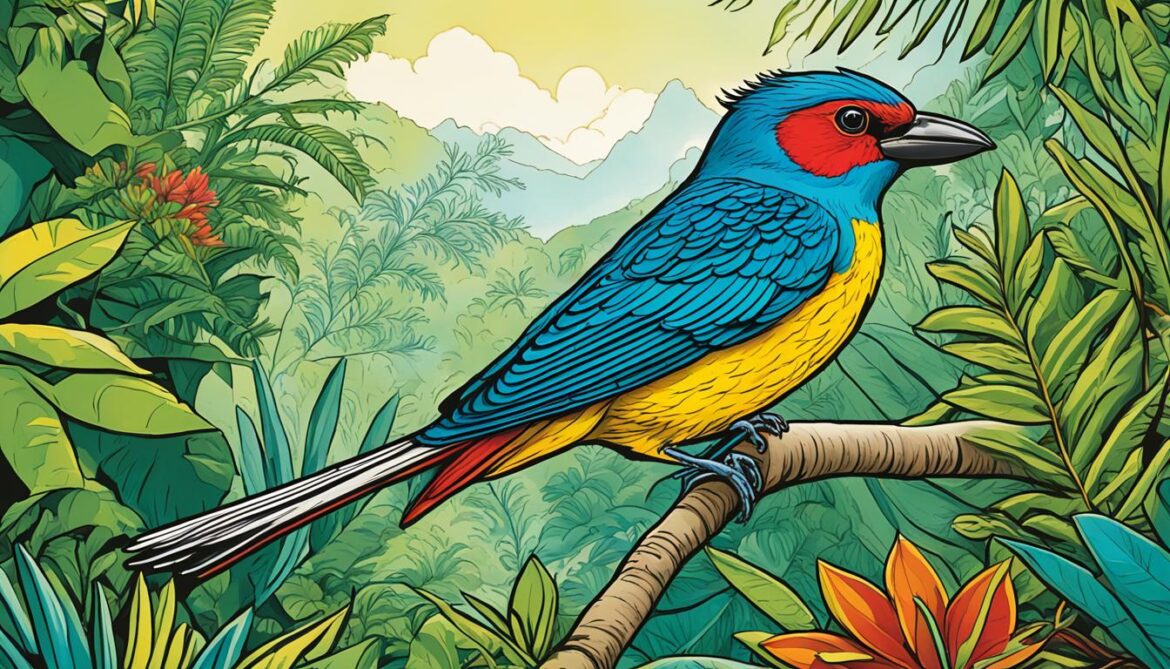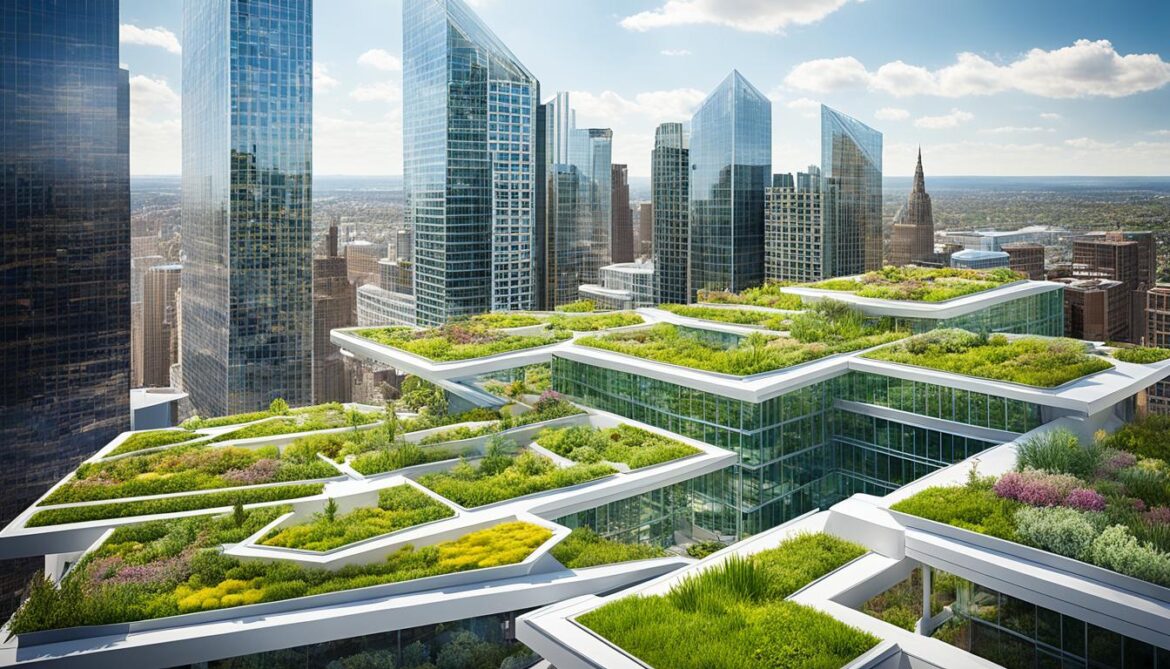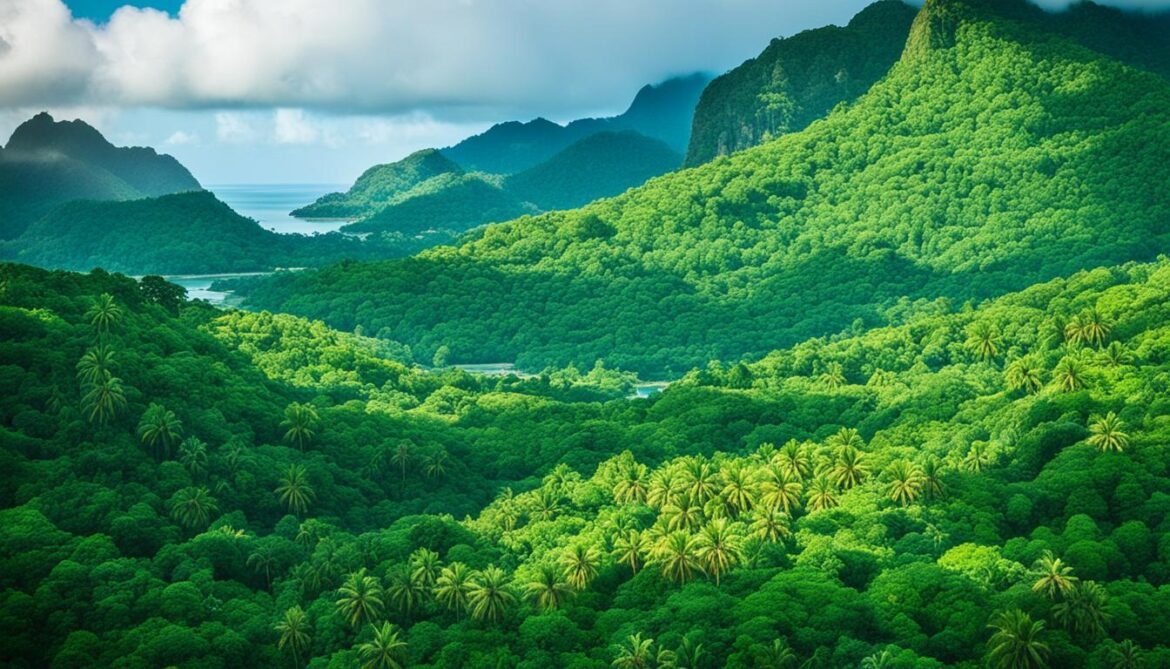Seychelles Biodiversity and the Built Environment
Welcome to our article on Seychelles biodiversity and its relationship with the built environment. The Seychelles archipelago, a stunning collection of 115 granite and coral islands nestled in the Indian Ocean, is renowned for its exceptional biodiversity. From unique plant species to endangered birds, threatened land and marine mammals, and vulnerable amphibians and marine mammals, the Seychelles boasts an incredible array of wildlife found nowhere else on Earth.
However, with increasing human activities such as habitat destruction, pollution, and climate change, the delicate balance of Seychelles’ biodiversity is under threat. Conservation efforts are essential to protect and preserve this natural heritage for the future generations to come, ensuring the continuation of sustainable development, the provision of ecosystem services, and the maintenance of ecological balance.
Key Takeaways:
- Seychelles is an archipelago in the Indian Ocean known for its exceptional biodiversity.
- The region is home to numerous unique and endemic plant species.
- Endangered bird species, such as the Seychelles black parrot and magpie robin, require conservation efforts.
- Threatened land and marine mammals, including the Seychelles sheath-tail bat and Dugong, need habitat protection.
- Vulnerable amphibians and marine mammals face challenges from climate change and habitat disturbance.
Unique Plant Species in Seychelles
The Seychelles archipelago is renowned for its diverse and distinct plant life. It is home to approximately 75 endemic plant species, including critically endangered species like the jellyfish tree and Seychelles balsam. The iconic Coco de Mer palm, found exclusively on Praslin and Curieuse islands, is a national flagship species. Preserving and protecting these endemic plant species is crucial for maintaining ecological balance and conserving Seychelles’ natural heritage.
Endemic Plant Species in Seychelles
One of the remarkable features of the Seychelles archipelago is its abundance of unique plant species. These plants thrive in the pristine habitats that characterize the islands’ diverse ecosystems. With approximately 75 endemic plant species, Seychelles boasts an extraordinary level of plant biodiversity that is found nowhere else on Earth.
Among the endemic plants, two species stand out due to their critical conservation status. The jellyfish tree (Medusagyne oppositifolia), named after its unique resemblance to a floating jellyfish, is a critically endangered plant species found only in a few locations on Mahe Island. The Seychelles balsam (Impatiens seychellensis) is another critically endangered plant species that is endemic to Seychelles.
The jellyfish tree and Seychelles balsam are just two examples of the rare and fragile plant life that calls Seychelles home. Their survival depends on our efforts to preserve their habitat and protect them from further endangerment.
The Coco de Mer Palm
No discussion of Seychelles’ unique plant species would be complete without mentioning the iconic Coco de Mer palm (Lodoicea maldivica). This palm tree, famous for its enormous and distinctive double nut, is native to the islands of Praslin and Curieuse. The Coco de Mer palm is not only a symbol of Seychelles but also serves as a national flagship species due to its ecological and cultural significance.
The Coco de Mer palm plays a vital role in the ecosystem by providing habitat and resources for various plant and animal species. Its large, fleshy fruits are an important food source for endemic birds and land-dwelling crabs. Preserving the natural habitats where the Coco de Mer palm thrives is crucial for the continued existence and conservation of this unique plant species.
The Importance of Habitat Preservation
Protecting the natural habitats of unique plant species is essential for ensuring their survival and maintaining the ecological balance of Seychelles. Habitat preservation involves conserving the specific environments where these plants thrive, including the forests, wetlands, and coastal areas that support their growth and reproduction.
Preserving habitats for endemic plant species not only safeguards their existence but also supports the entire biodiversity of Seychelles. Many of these plants have complex ecological relationships with other organisms, including insects, birds, and mammals. By protecting their habitats, we ensure the continued presence of these vital interactions and contribute to the overall health and resilience of Seychelles’ ecosystems.
| Endemic Plant Species | Conservation Status |
|---|---|
| Jellyfish Tree (Medusagyne oppositifolia) | Critically Endangered |
| Seychelles Balsam (Impatiens seychellensis) | Critically Endangered |
| Coco de Mer Palm (Lodoicea maldivica) | Protected Species |
Endangered Bird Species in Seychelles
Seychelles is home to 13 species and 17 subspecies of endemic birds, some of which are endangered. Among these remarkable avian inhabitants, two notable bird species face the threat of extinction: the Seychelles black parrot and the Seychelles magpie robin.
The Seychelles black parrot (Coracopsis (nigra) barklyi) is a majestic and elusive species found only in the dense forests of Praslin Island. With its striking ebony plumage and vibrant red beak, this parrot is a symbol of Seychelles’ biodiversity. However, habitat destruction and illicit wildlife trade have decimated its population, placing it on the brink of extinction.

“The Seychelles black parrot is a national treasure and a testament to the ecological richness of our islands. We must take urgent action to protect this magnificent bird and its habitat,” says Dr. Marie-France Cordon, a renowned ornithologist.
The Seychelles magpie robin (Copsychus sechellarum) is another critically endangered bird species unique to Seychelles. With its striking black plumage and white markings, this robin has faced population decline due to habitat loss and predation by invasive species.
Conservation efforts in Seychelles have been pivotal in saving these endangered bird species from the brink of extinction. Translocation programs, habitat protection, and community involvement have played a crucial role in their survival. The Seychelles Ministry of Environment and Sustainable Development, along with local NGOs, is actively working towards the preservation of these avian treasures.
The Success of Conservation Efforts
The Seychelles black parrot, once on the verge of extinction, has experienced a remarkable recovery. Thanks to intensive habitat management and awareness campaigns, the population has steadily increased in recent years. The establishment of protected areas, such as the Vallée de Mai Nature Reserve, has provided a safe haven for the parrots.
The Seychelles magpie robin, too, has witnessed a resurgence in population numbers. Habitat restoration and predator control programs have allowed these robins to thrive in protected areas like Cousin Island Special Reserve.
Protecting Seychelles’ Unique Avian Heritage
The conservation of these endemic bird species is vital for maintaining the overall health and balance of Seychelles’ ecosystem. These birds play crucial roles in pollination, seed dispersal, and insect control, contributing to the ecological stability of the islands.
Efforts to protect the Seychelles black parrot and the Seychelles magpie robin extend beyond the birds themselves. It involves preserving their habitats, such as the indigenous forests and coastal areas they call home. Through sustainable land management practices and the establishment of protected areas, Seychelles aims to safeguard these critical ecosystems.
| Endangered Bird Species | Conservation Efforts |
|---|---|
| Seychelles black parrot (Coracopsis (nigra) barklyi) |
|
| Seychelles magpie robin (Copsychus sechellarum) |
|
Seychelles’ commitment to biodiversity conservation serves as an inspiration to the world. By protecting these endangered bird species, we not only save magnificent creatures from extinction but also safeguard the ecological balance and resilience of Seychelles’ unique natural heritage.
Threatened Land and Marine Mammals in Seychelles
Seychelles is home to several fascinating and vulnerable mammal species that play a crucial role in the ecosystem. On land, there are four endemic land mammal species, all of which are bats. One of these is the critically endangered Seychelles sheath-tail bat, which is limited to just three roosts on Mahe and Silhouette islands.
The marine environment surrounding Seychelles is teeming with a diverse array of mammal species, including the critically endangered Dugong. This magnificent marine mammal faces numerous conservation challenges due to habitat degradation and human activities.
In addition to the land mammals and marine mammals, the Aldabra giant tortoise, although not endangered, has been introduced to several islands in Seychelles. The tortoise population is carefully managed to ensure the preservation of this iconic species.
Conservation efforts strive to protect the habitats of these vulnerable mammal species and raise awareness about their importance in maintaining the ecological balance of Seychelles. This includes initiatives such as habitat preservation and restoration, research and monitoring programs, and community education to promote sustainable practices.

The Need for Conservation Efforts
Protecting threatened land and marine mammals in Seychelles is crucial for maintaining the delicate balance of the island’s ecosystems. By safeguarding their habitats and raising awareness about their importance, we can contribute to the long-term sustainability of Seychelles’ biodiversity and ensure the survival of these remarkable mammal species.
| Limited Land Mammals | Marine Mammals |
|---|---|
| Seychelles sheath-tail bat | Dugong |
| – Critically endangered | – Critically endangered |
| – Limited to Mahe and Silhouette islands | – Faces habitat degradation |
| Aldabra giant tortoise | |
| – Introduced species |
Vulnerable Amphibians and Marine Mammals in Seychelles
Seychelles is a haven for biodiversity with its rich ecosystem, and it is home to several vulnerable amphibians and marine mammals. The archipelago is home to five endemic species of frogs and six endemic species of caecilians. Unfortunately, these unique amphibians are facing multiple threats, including climate change and the introduction of lethal viruses.
Conservation efforts play a vital role in maintaining the delicate balance of biodiversity in Seychelles. Continuous monitoring and research are essential to understanding the vulnerabilities of these species and developing effective strategies for their protection.
In addition to amphibians, the marine environment surrounding Seychelles is home to the critically endangered Dugong. This majestic marine mammal relies on the preservation of its habitat for long-term survival. It is imperative to implement conservation measures to safeguard their habitats and ensure the preservation of these magnificent creatures.
Through active conservation efforts, including habitat protection and restoration, education, and community involvement, we can help secure the future of vulnerable amphibians and marine mammals in Seychelles. By raising awareness and engaging in sustainable practices, we can preserve Seychelles’ unique biodiversity for generations to come.

Continuous monitoring, research, and conservation strategies are crucial for ensuring the survival of these vulnerable amphibians and marine mammals. By prioritizing their protection, we contribute to the preservation of Seychelles’ natural heritage and the delicate balance of its biodiversity.
Threats to Biodiversity in Seychelles
Seychelles’ unique biodiversity is under threat from various factors, including habitat destruction, pollution, invasive species, and climate change. Human activities such as coastal development, timber exploitation, and agricultural practices contribute to habitat destruction and loss. Invasive species like rats and barn owls pose a significant threat to native species. Pollution, including oil spills and marine debris, negatively impacts marine ecosystems. Climate change leads to rising sea levels and coral bleaching, further affecting biodiversity. Protecting and preserving Seychelles’ biodiversity requires measures to address these threats.

| Threats | Impact on Biodiversity |
|---|---|
| Habitat Destruction | Loss of natural habitats for plants and animals |
| Invasive Species | Competition with native species for resources |
| Pollution | Degradation of ecosystems and harm to marine life |
| Climate Change | Disruption of ecosystems and loss of species |
“The preservation of biodiversity is crucial for the long-term survival of Seychelles’ unique ecosystems. We must take immediate action to address the threats posed by habitat destruction, invasive species, pollution, and climate change.”
Human activities such as coastal development, urbanization, and deforestation lead to habitat destruction. This loss of natural habitats disrupts the delicate balance of ecosystems and threatens the survival of many plant and animal species. Invasive species, introduced by human activities, often outcompete and displace native species, leading to a loss of biodiversity.
Pollution is another significant threat to Seychelles’ biodiversity. Oil spills, marine debris, and chemical pollutants can cause long-term damage to marine ecosystems, affecting coral reefs and marine life. The pollution of land and water resources further exacerbates the challenges faced by native species.
Climate change is a global issue that has serious implications for Seychelles’ biodiversity. Rising sea levels and increased temperatures directly impact coastal habitats, while coral bleaching threatens the incredible marine biodiversity. These changes disrupt the delicate ecological balance and put many species at risk of extinction.
Tackling these threats requires a multi-faceted approach involving conservation efforts, sustainable development practices, and international collaboration. Sustainable urban planning, habitat restoration, and effective management of protected areas are crucial to safeguarding Seychelles’ unique biodiversity for future generations.
The Importance of Biodiversity in the Built Environment
Biodiversity is often overlooked in the built environment, but its conservation and enhancement are crucial for achieving sustainability. The decline of biodiversity has serious consequences for the environment and society.
The construction industry has an important role to play in protecting and enhancing biodiversity. One effective measure is implementing mandatory biodiversity net gain for new developments. This ensures that any biodiversity lost during construction is compensated for by creating new habitats or improving existing ones. By integrating biodiversity considerations into the planning and design process, the built environment can actively contribute to the conservation of Seychelles’ unique biodiversity.
Creating green spaces, such as parks and green walls, is another way to support biodiversity in urban areas. Green spaces provide valuable habitats for wildlife, including plants, insects, and birds, and contribute to the overall health of urban ecosystems. These green areas can serve as important stepping stones for species migration and provide corridors for wildlife movement.
Raising awareness among construction industry professionals, staff, and suppliers about the importance of biodiversity is crucial for effective conservation efforts. By fostering a culture of biodiversity consideration, companies can incorporate sustainable practices into their operations. This includes selecting eco-friendly materials, minimizing habitat disturbance during construction, and implementing measures to avoid or mitigate the negative impacts on biodiversity.
“Protecting and enhancing biodiversity in the built environment is not only environmentally responsible but also economically beneficial. It helps create resilient, livable cities and contributes to the overall well-being of communities.”
Ultimately, integrating biodiversity into the built environment is a win-win situation. It supports the conservation of Seychelles’ unique biodiversity while creating sustainable, vibrant, and resilient cities for the future.

Practical Approaches to Biodiversity Conservation
The conservation of Seychelles Biodiversity and the Built Environment requires practical approaches that focus on habitat modification and the creation of green spaces. By implementing these strategies, we can contribute to the preservation of the unique ecosystems found in Seychelles.
Developing green roofs, walls, and public parks within urban areas can provide much-needed refuge for displaced wildlife and promote urban ecosystems. These green spaces act as vital corridors for species movement, ensuring connectivity between fragmented habitats. They also enhance the aesthetic appeal of urban landscapes, improving the quality of life for residents.
Collecting biodiversity data is crucial for effective conservation efforts. By monitoring and reporting this data to local authorities and relevant bodies, we can gain valuable insights into the status and trends of biodiversity in the Seychelles. This information enables informed decision-making and facilitates targeted conservation actions across the archipelago.
“The creation of green spaces promotes urban biodiversity by providing habitats for wildlife and contributing to the overall ecological balance.” – Dr. Emily Green, Conservation Biologist
Raising awareness among industry stakeholders is paramount in fostering a culture of biodiversity conservation. By incorporating sustainable practices and incorporating site-specific strategies, we can minimize the negative impacts of development on biodiversity. Incentivizing these initiatives and integrating them into environmental regulations can further encourage the implementation of biodiversity-friendly approaches.
Promoting Biodiversity Data Collection
Biodiversity data collection plays a crucial role in preserving Seychelles’ unique species. To facilitate this process, it is important to:
- Establish partnerships between research organizations, local communities, and government agencies to enhance collaboration and data sharing.
- Invest in technologies and tools that aid in the collection, analysis, and management of biodiversity data.
- Train and empower local communities to participate in citizen science initiatives, enabling them to contribute valuable observations and insights.
- Encourage the integration of biodiversity data into land-use planning and decision-making processes.
By actively engaging in biodiversity data collection and conservation efforts, we can ensure the preservation of Seychelles’ rich natural heritage for generations to come.
| Practical Approaches | Description |
|---|---|
| Habitat Modification | The development of green roofs, walls, and public parks that serve as wildlife habitats and promote species connectivity. |
| Green Spaces | The creation of green spaces within urban areas to provide shelter and food for wildlife, enhancing urban biodiversity. |
| Biodiversity Data Collection | Collecting and reporting biodiversity data to monitor and protect the diverse species found in Seychelles. |
| Awareness and Stakeholder Engagement | Raising awareness among industry stakeholders and incentivizing site-specific strategies to enhance biodiversity conservation in the built environment. |

Conclusion
Biodiversity conservation is crucial for achieving a sustainable future, and the built environment has a significant role in protecting and enhancing biodiversity. To limit the negative impact on biodiversity, proposals for regulations such as mandatory biodiversity net gain for new developments are being considered. Habitat modification and the creation of green spaces are practical approaches that can contribute to biodiversity conservation in urban areas.
Effective conservation efforts require raising awareness and implementing site-specific strategies. By prioritizing biodiversity in the built environment, we can contribute to environmental sustainability and preserve Seychelles’ unique natural heritage. It is essential that we recognize the value of biodiversity and take action to protect it for future generations.
Building a sustainable future requires a collective effort. Let us embrace the responsibility to safeguard our planet’s biodiversity within the built environment. By integrating conservation practices into our construction and development projects, we can create more harmonious and resilient urban ecosystems, ensuring a healthier planet for all.








